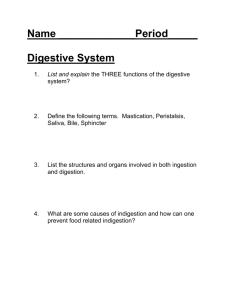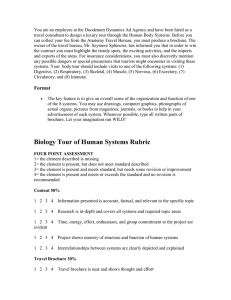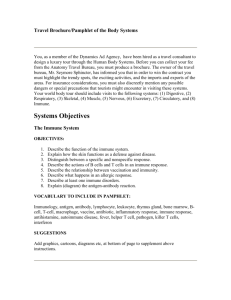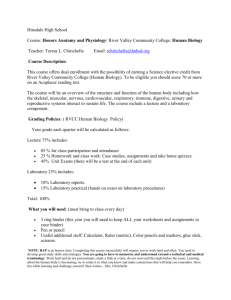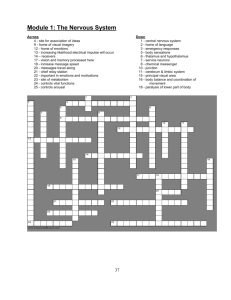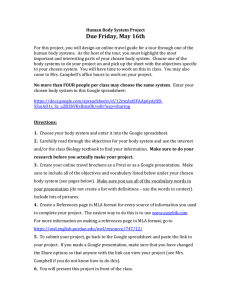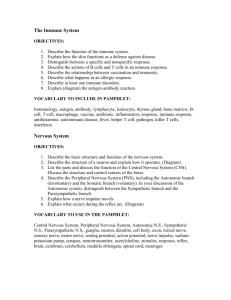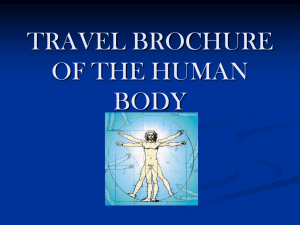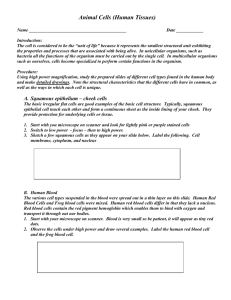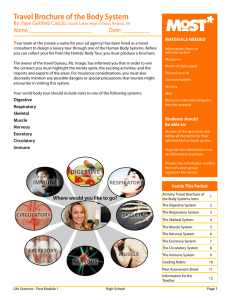Human Body Systems: Objectives & Vocabulary Study Guide
advertisement
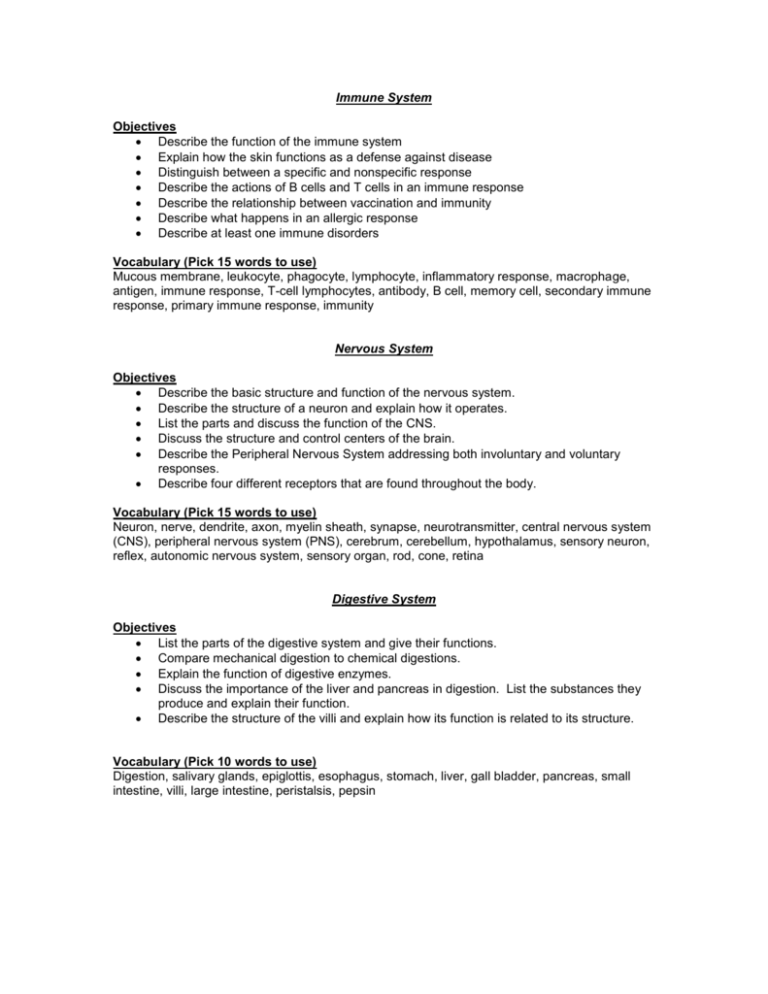
Immune System Objectives Describe the function of the immune system Explain how the skin functions as a defense against disease Distinguish between a specific and nonspecific response Describe the actions of B cells and T cells in an immune response Describe the relationship between vaccination and immunity Describe what happens in an allergic response Describe at least one immune disorders Vocabulary (Pick 15 words to use) Mucous membrane, leukocyte, phagocyte, lymphocyte, inflammatory response, macrophage, antigen, immune response, T-cell lymphocytes, antibody, B cell, memory cell, secondary immune response, primary immune response, immunity Nervous System Objectives Describe the basic structure and function of the nervous system. Describe the structure of a neuron and explain how it operates. List the parts and discuss the function of the CNS. Discuss the structure and control centers of the brain. Describe the Peripheral Nervous System addressing both involuntary and voluntary responses. Describe four different receptors that are found throughout the body. Vocabulary (Pick 15 words to use) Neuron, nerve, dendrite, axon, myelin sheath, synapse, neurotransmitter, central nervous system (CNS), peripheral nervous system (PNS), cerebrum, cerebellum, hypothalamus, sensory neuron, reflex, autonomic nervous system, sensory organ, rod, cone, retina Digestive System Objectives List the parts of the digestive system and give their functions. Compare mechanical digestion to chemical digestions. Explain the function of digestive enzymes. Discuss the importance of the liver and pancreas in digestion. List the substances they produce and explain their function. Describe the structure of the villi and explain how its function is related to its structure. Vocabulary (Pick 10 words to use) Digestion, salivary glands, epiglottis, esophagus, stomach, liver, gall bladder, pancreas, small intestine, villi, large intestine, peristalsis, pepsin Excretory System Objectives Define excretion Describe the function of the skin, kidneys, lungs and liver in the excretory process. Describe the structure and function of the kidney and its parts. Explain how the nephron functions. Explain the difference between filtration and reabsorption. Vocabulary (USE all words) excretion, kidney, nephron, filtration, reabsorption, ureter, bladder, urethra, adrenal glands, sweat glands, urine Respiratory System Objectives Identify the structure and function of the parts of the respiratory system. Explain the function of the ribs and diaphragm in the breathing process. Explain how breathing rate is controlled. Describe what happens between the alveoli and the capillaries. Describe the effects of smoking on respiration. Describe how asthma and emphysema affect respiration Vocabulary (Pick 10 words to use) Alveoli, inhalation, exhalation, asthma, emphysema, lung cancer, gas exchange, epiglottis, trachea, lung, diaphragm, cilia, vital capacity Circulatory System Objectives List the functions of the human circulatory system. Describe the path of a drop of blood from the right atrium to the aorta. Draw and label the parts of a heart. Compare the blood on the right side of the heart with that on the left side. Describe the components of blood (red blood cells, white blood cells, platelets and plasma) Explain how the heart beats. Explain what is meant by blood pressure. Discuss diseases of the heart (hypertension and atherosclerosis) Vocabulary (Pick 10 words to use) Aorta, artery, capillary, vein, atrium, valve, ventricle, circulatory system, red blood cells, white blood cells, platelets, plasma, diastole, systole, pacemaker Muscular System Objectives Compare the structure and function of the three types of muscles. Give examples of where each type of muscle is found in the body. Explain the mechanism of muscle contraction. Explain the function of flexors and extensors. Explain how muscles fatigue. Explain how muscles, bones and tendons are related. Vocabulary (USE all words): Skeletal muscle, smooth muscle, cardiac muscle, tendon, ligament, actin, myosin, myofibril, aerobic exercise, anaerobic exercise, resistance Skeletal System Objectives State the functions of the skeletal system. Describe the composition of bone. Identify changes in bone from infancy to old age. Explain the differences in structure and function between the 4 major kinds of moveable joints: ball and socket, hinge, pivot, gliding (plane) Describe some ailments of the skeletal system. Describe the joint in the skull. Why is this joint unique? Vocabulary (USE all words): Marrow, fracture, osteoporosis, joint, ligament, sprain, tendon, arthritis, cartilage
